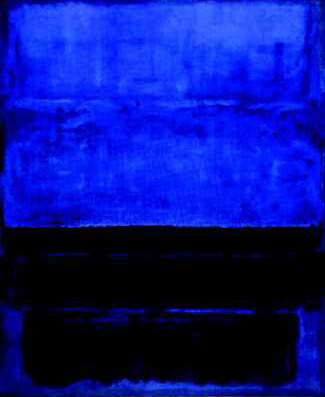 As Portland prepares to celebrate the art of Mark Rothko, who immigrated with his family to the city in 1913, and whose first one-person show was at the Portland Art Museum in 1933, and as we prepare to experience the extraordinary power of his work first hand at an exhibition of some 45 of his works, spanning his entire career, it is worth recalling that Rothko’s sense of space was honed in walking the West Hills. In his 1993 biography of the painter, James Breslin notes that Rothko specifically recalled the time in his youth that he spent “in front of the endless space of the landscape of Oregon lying covered by wintery snows, in front of the monumental emptiness that is nothingness and at the same time part of it ‘all.'” Nothing better explains the sense of landscape we experience in his pictures.
As Portland prepares to celebrate the art of Mark Rothko, who immigrated with his family to the city in 1913, and whose first one-person show was at the Portland Art Museum in 1933, and as we prepare to experience the extraordinary power of his work first hand at an exhibition of some 45 of his works, spanning his entire career, it is worth recalling that Rothko’s sense of space was honed in walking the West Hills. In his 1993 biography of the painter, James Breslin notes that Rothko specifically recalled the time in his youth that he spent “in front of the endless space of the landscape of Oregon lying covered by wintery snows, in front of the monumental emptiness that is nothingness and at the same time part of it ‘all.'” Nothing better explains the sense of landscape we experience in his pictures.
In 1951, he defended his practice of painting large canvases because he said, somewhat paradoxically, “I want to be very intimate and human. To paint a small picture is to place yourself outside you’re your experience, to look upon an experience as a stereopticon view or reducing glass. However you paint the larger picture, you are in it. It isn’t something you command.” In front of Rothko canvas, we are consumed in its sometimes extremely somber space. These expanses of color become, in this sense, stage sets for the human drama that transpires before them.
As Rothko further explains: “I’m interested only in expressing the basic human emotions—tragedy, ecstasy, doom, and so on—and the fact that lots of people break down and cry when confronted with my pictures shows that I communicate with those basic human emotions. The people who weep before my pictures are having the same religious experience I had when I painted them.” Which is to say, something akin to “the monumental emptiness that is nothingness and at the same time part of it ‘all.’”
The emotional toll of such painting finally cost Rothko his life, as his vision grew darker and darker through the 1950s and ‘60s until, in 1970, he hanged himself in his studio. This is a story the paintings will tell. But in the coming weeks we have the rather remarkable opportunity to delve even deeper into the complexities of Rothko’s vision. Portland Center Stage will produce the play Red, which focuses on Rothko’s 1958–59 commission to produce a set of murals for the Four Seasons Restaurant in the Seagram Building on Park Avenue in New York. “I hope to paint something that will ruin the appetite of every son of a bitch who ever eats in that room,” he said. He created instead what he called “broad expanses of somber color” that he likened to the frescoes in Pompeii’s House of Mysteries. “They are not pictures,” he said. “I have made a place.”
Perhaps even more compelling will be the March 10 performance of Third Angle Music Ensemble, together with the Resonance Choral Ensemble, of Morton Feldman’s 1971 piece Rothko Chapel, an evocation of the nondenominational sanctuary in Houston written by one of his closest friends. Perhaps the best short description of the work is Alex Ross’s in his 2007 book The Rest is Noise, but, simply stated, the work is transcendent. And it embodies the sense of tragedy, ecstasy, and doom that is Rothko’s painting.
Henry Sayre serves as an Oregon Arts Commissioner, one the Cultural Trust statewide cultural partners. He is the author of 10 books, including A World of Art, now in its 7th edition, and Writing about Art, now in it 6th edition, widely used throughout the nation.
Third Angle Music Ensemble and the Portland Art Museum both received a Cultural Development Grant this year for their Rothko projects. The Rothko Exhibit opens at Portland Art Museum on February 18.
Ron Blessinger is also featured in the “This is Culture” marketing pieces, playing his violin in the Lovejoy Halperin fountain in Portland.